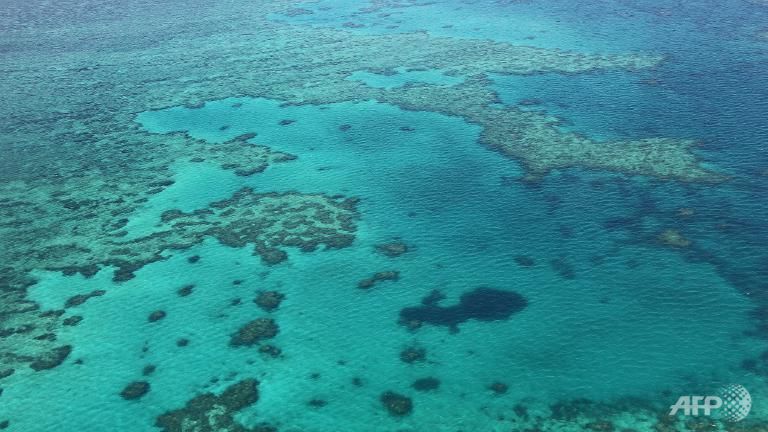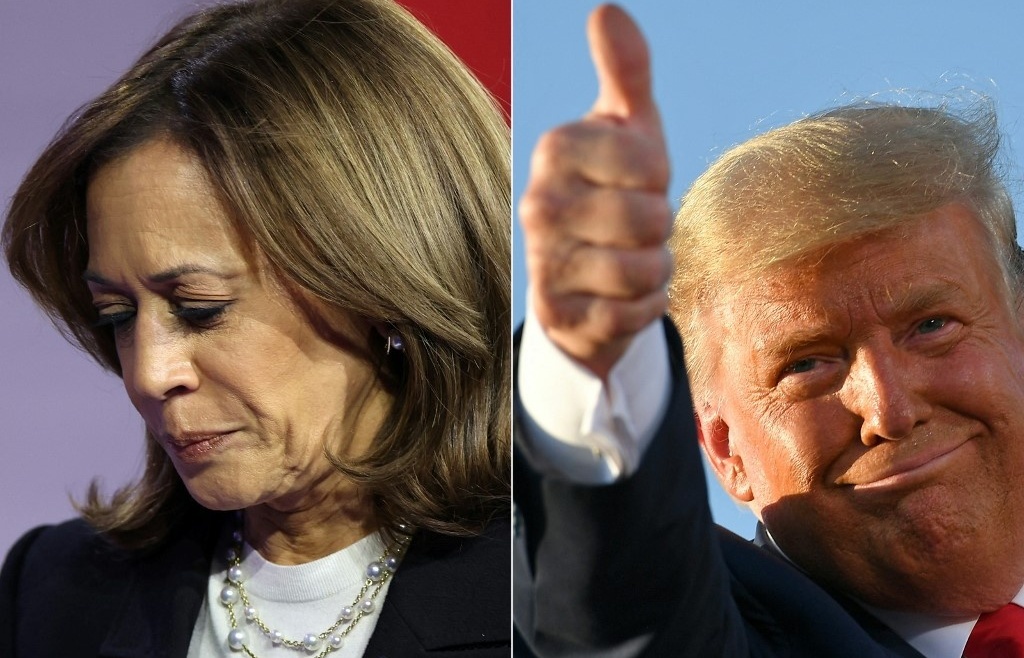Plan ensures Great Barrier Reef future: Australia
 An aerial view of the Great Barrier Reef off the coast of the Whitsunday Islands, along the central coast of Queensland. (Photo: AFP/Sarah Lai) |
SYDNEY: Australia released its long-term blueprint to save the Great Barrier Reef Saturday (Mar 21), with Prime Minister Tony Abbott saying protecting the World Heritage site was a priority.
The 35-year plan for the major tourist attraction off the Queensland coast includes a complete and permanent ban on the dumping of capital dredge material in the area and sets targets to improve water quality and marine life populations.
Abbott said the plan would "secure Australia's majestic Great Barrier Reef as a place of outstanding universal value on the World Heritage List".
The United Nations Educational, Scientific and Cultural Organization has threatened to put the reef on its danger list due to threats from dredging, climate change, farm run-off and the destructive crown-of-thorns starfish.
But Abbott said the reef was a priority for his conservative government and argued that the 'Reef 2050 Long Term Sustainability Plan' addressed the international community's concerns.
"At the highest level this is a subject where Australia is telling our international partners... that we are utterly committed as an entire nation to the protection of the Great Barrier Reef," Abbott told reporters in Queensland. "The last thing I want to do as prime minister is anything that would compromise the quality of this reef which it is our duty to protect for the future."
The Great Barrier Reef, which stretches over 2,300 kilometres (1,425 miles), is a maze of some 3,000 coral reefs and 1,050 islands along the northeast coast of Australia teeming with marine life.
Environment Minister Greg Hunt said the plan was designed to ensure that for each successive decade between now and 2050, the quality and universal values of the reef improved. "The heart of this plan and programme is about better water quality with hard targets including a 50 per cent reduction in nitrogen by 2018 and an 80 per cent reduction in nitrogen by 2025," he said.
Pesticide loads in priority areas must drop by at least 60 per cent by 2018 while populations of turtles, dolphins and dugongs must be either stable or increasing by 2020.
Queensland Environment Minister Steven Miles said the plan addressed the biggest medium-term threat to the reef, that of sediment, nutrients and pesticides run-off and also committed the state to limiting port expansion to four sites.
"I believe that with it we will be able to convince the World Heritage committee that not only should they not list the reef as in danger but that we will keep the reef from actually being in danger," he said.
But environmental group WWF-Australia said while the plan included some good initiatives, including A$100 million (US$77.7 million) more federal funding for the reef, it fell short of halting its decline. "The long-term survival of the Great Barrier Reef depends on the world acting together to reduce greenhouse gas emissions, including stronger action from Australia,' said chief executive Dermot O'Gorman.
Greenpeace said it was concerned that the plan still allowed for coal mine expansion in Queensland and port expansion along its coastline.
What the stars mean:
★ Poor ★ ★ Promising ★★★ Good ★★★★ Very good ★★★★★ Exceptional
Latest News
More News
- Tropical storm Trami leaves at least 24 people dead in Philippines (October 24, 2024 | 17:36)
- Singapore grants conditional approval for solar power import from Australia (October 24, 2024 | 17:27)
- ASEAN digital economy set to reach $2 trillion by 2030 (October 22, 2024 | 15:08)
- Thailand asks Laos to waive visa fee at border checkpoints to boost tourism (October 21, 2024 | 17:23)
- Laos pledges to continue efforts to empower girls (October 21, 2024 | 17:17)
- Chinese electric vehicle maker to build plant in Indonesia (October 21, 2024 | 17:12)
- Vietnam Elevator Association introduces Elevator Safety Application to the world (October 18, 2024 | 09:00)
- A taste of the future - the go-to spot at the Worldchefs Congress & Expo 2024 (October 15, 2024 | 16:11)
- Jakarta to impose household waste levy (October 14, 2024 | 16:49)
- China, Laos plan to build connectivity development corridor with Thailand (October 14, 2024 | 16:19)




















 Mobile Version
Mobile Version